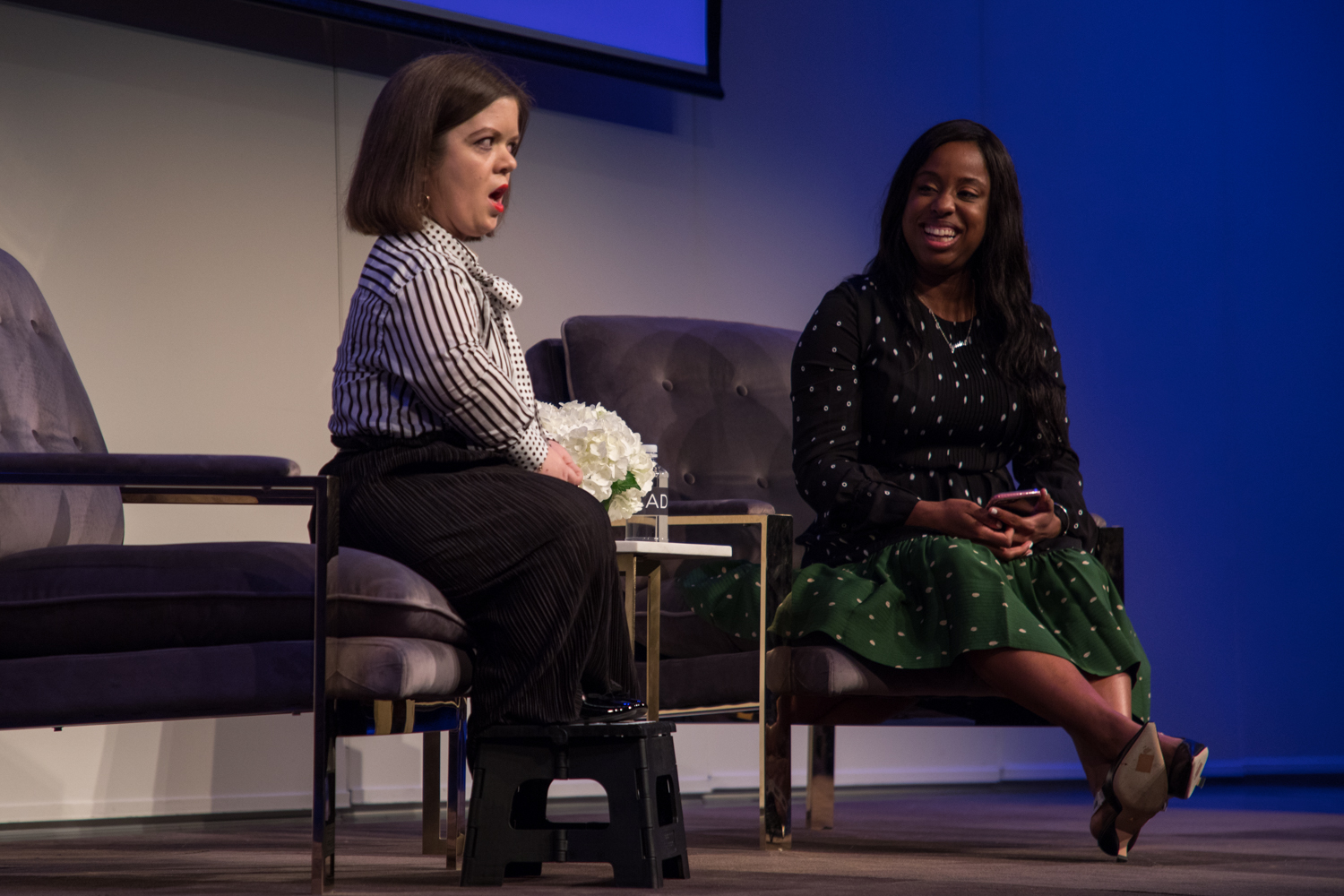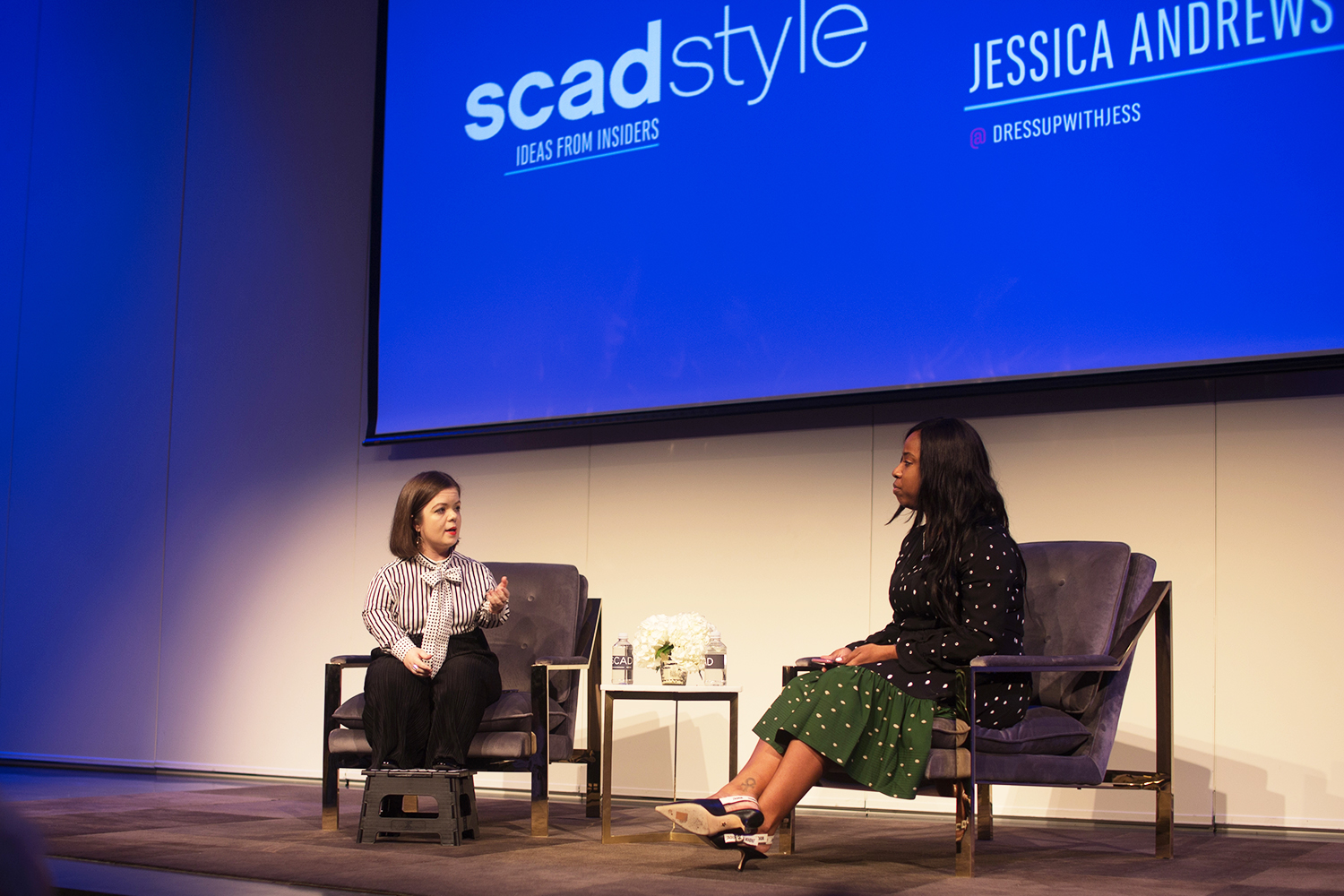When writer and academic Sinéad Burke and fashion features editor at Teen Vogue Jessica Andrews strode across the stage and took their seats, they looked out at the audience with a fire in their eyes that dared anyone to underestimate them. A look that they no doubt showed to the world and the fashion industry in particular.
Burke and Andrews’ clever wit and humor and undeniable authority instantly charmed the audience and invited SCAD students to see through their perspective– Burke as a little woman and Andrews as a black woman– for the duration of the discussion.
Burke found her way into fashion while pursuing her passion for education. Initially wanting to be an elementary school teacher, despite not seeing anyone that looked like her in that field, she attributed her bravery and daringness to her father, who is also a little person. She noted, “I always had this belief that anything is possible, because my dad combated every challenge, superseded it, and survived with such grace.” This was the catalyst that propelled her to share her unique thoughts on the fashion industry through an academic and economic lens by starting a blog.
Burke and Andrews then went on to discuss the fashion industry’s move to inclusive fashion and how to know when it is authentic or if it’s simply a money-grabbing scheme. Andrews put it simply: “There has to be representation on both sides. You can’t talk about diversity and not have a diverse team.” Burke agreed and elaborated that “What needs to occur is collaboration from the very moment of conception of an idea.” She called attention to the issue with the new movement for disabled and adaptable fashion and how disabled people are only being included in the process when designers need models.

The fashion industry has a tendency to speak for its customer and slap the label of inclusion on it. The entire concept of excluding those you’re advocating to include in the creative process is contradictory within itself. However, Burke urged the audience to utilize the power they all possess: money and their voice.
Burke and Andrews also analyzed the power dynamic of the fashion industry at large and its inability to adapt to change. Picture an old, bourgeois poodle that refuses to learn new tricks. So, it is not surprising that it has been slow to tap into the expansive disabled and minority market. However, Burke placed responsibility for this intrinsic bias toward the disabled on how they have always been presented as a medical model, explaining how “Even when we design for disability, we never include principals of beauty.” She reiterated how her money was just as valuable as anyone else’s and how she should be allowed to purchase anything she liked just as everyone else does.
At the end of the powerful discussion, The Manor was able to ask both women to share their thoughts on the concept of diversity erasure. Both expressed how they had to overcome wanting to be “just Sinéad” or “just Jessica” and embrace their identities and what made them unique.
After coming to that conclusion in their personal lives, both were in quick agreement that the use of phrases like “I don’t see you as a little person,” or “I don’t see color,” are only used to help the majority feel “more comfortable with their discomfort.” Burke and Andrews joyfully declared their love for and pride in their differences. Burke challenged the audience and the world with a tenacious smirk, “Give me all the labels you got.”
Photos by Liam Graham Haehnle and Julia McCartney

